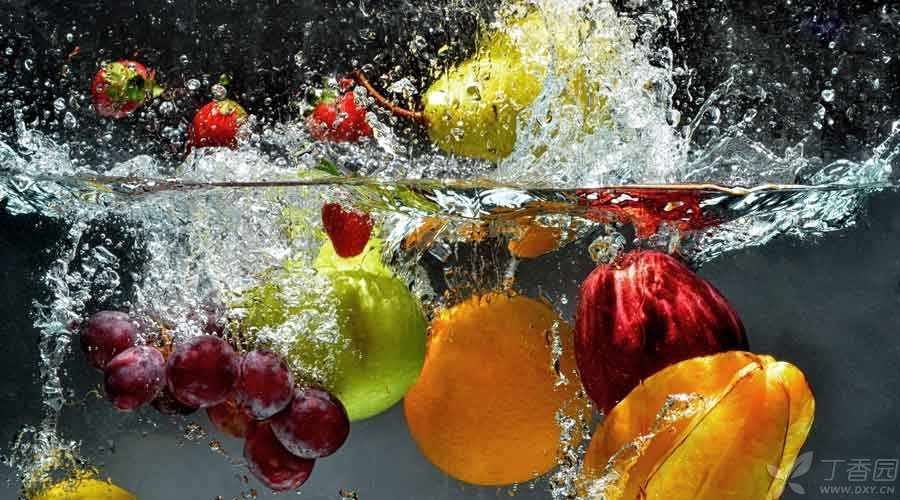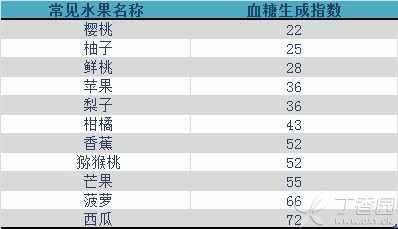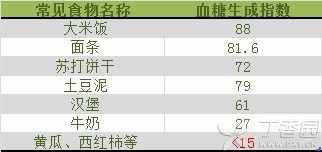
As an extremely harmful and deceptive pseudoscientific conclusion, [diabetic patients cannot eat fruits] is widely circulated in the society. I once received a representative diabetic patient who has not touched fruits for more than ten years. His logical deduction is very simple: cannot eat sweets + fruits are very sweet and cannot eat fruits.
The poor ten years or so are personal tragedies and dereliction of duty in diabetes health education. In the Internet era, the high-speed dissemination of information is a double-edged sword. As a doctor, one must use this sword well to make and transmit scientific voices.
Glycemic index (GI)
Assuming that we organized all the food to take an examination, The test question is the ability of each food to raise blood sugar. It is easy to guess, The best grader is glucose itself, and we set it at 100. For other foods that contain the same amount of glucose, we compare their sugar-raising ability with the best grader glucose, and we will get their own scores-this is the [glycemic index] of the food. Do you see that? Glycemic index is actually a measure of how much effect various foods may have on blood sugar. Generally speaking, foods with a high index (greater than 70) are not suitable for diabetics, while foods with a low index (less than 55) are healthy foods suitable for diabetes.
The following is a public announcement of the results of some fruit candidates:

We can also compare their results with several candidates who are very familiar with us:

See, the sugar-raising ability of most fruits, Even less than the staple food we usually eat. We can rightfully tell diabetics: If you can eat, you can eat fruits. Of course, when choosing fruit types, it is safer to choose those with low GI. The tool [glycemic index] greatly facilitates the choice of food for diabetics. However, there is still a misconception here: Can’t fruits with high GI be eaten?
Food glucose load (GL)
We selected two candidates with the same test scores: Watermelon and soda biscuits, 72, They are all foods with high GI value. From the perspective of food [quality], They have the same ability to raise blood sugar rapidly. But in life, We often eat different amounts. This involves another concept. Food blood sugar load (GL). It refers to the product of the amount of carbohydrate in food and its GI value. Let’s use watermelons and soda biscuits as examples: a. Watermelon Known: The GI of watermelon was 72, Every 100 grams of watermelon contains 5.5 grams of carbohydrate. So, When we eat four ounces (200 grams) of watermelon, Food glucose load GL = 5.5 × 2 × 72/100 = 8. B. Soda biscuits are also known: Soda cookies have a GI of 72, The carbohydrate content in every 100 grams of soda biscuits is 76 grams. So, When we ate 200 grams of soda biscuits, GL = 76 × 2 × 72/100 = 110. See, When we eat watermelon or soda biscuits with the same GI value and the same 100 g, The GL of watermelon is 4, The GL for soda cookies is 55, It is not an order of magnitude comparison at all. In other words, Watermelon has little effect on blood sugar, But soda biscuits make a difference. Of course, The premise of saying watermelon has little effect on blood sugar is: Eat only two ounces of watermelon. But if you don’t control it, Not 100 g at a time, but 1000 g, Even more, The GL value has also changed from 4 to 40 or even higher, which will significantly increase the blood sugar of diabetics. [Food Blood Glucose Load] This tool gives us the enlightenment that diabetics can eat not only fruits, but also what fruits, as long as they pay attention to [quantity]. Watermelon has a high GI value, but if they eat less, the GL value is also very low, which has little effect on blood sugar. As for cherries and grapefruit with low GI value, within a certain range, you can eat them, and the GL value is not high. As long as you know how to comprehensively use GI and GL, diabetics, please open your arms and embrace the fruit dinner that comes on your face.
The right time
There are many more tips for eating diabetes. In addition to learning to choose types and determination conditions, you should also know the right timing. For fruits, it is recommended to eat between means (e.g. Around 10 a.m.. And 4 p.m..) and before going to bed, instead of eating immediate after means.
The article was reprinted by Clove Garden authorized by the author.
